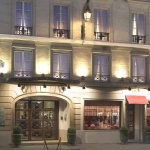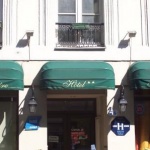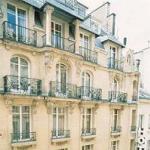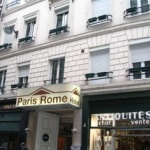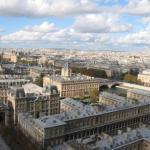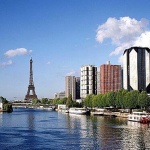Description Paris, France
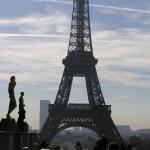 Winding streets and grand boulevards, famous monuments and squalid backwaters, exotic shops and luxurious restaurants, small bistros and the shabby bars, opera houses and smoky jazz clubs, respectable bourgeois, the weak performers and the homeless, the glitter and poverty of the huge city - Paris is all .
Winding streets and grand boulevards, famous monuments and squalid backwaters, exotic shops and luxurious restaurants, small bistros and the shabby bars, opera houses and smoky jazz clubs, respectable bourgeois, the weak performers and the homeless, the glitter and poverty of the huge city - Paris is all .Paris, is one of the few cities that did not suffer during the World War. For this reason, the architecture of the city can meet many interesting buildings that have not lost their beauty. Here you will feel not only the rhythm of modern life, but also a sense of the historical heritage of the city. Every corner of the city has its unique history and has preserved many secrets.
In Paris There is an endless remarkably beautiful places, among which is the most outstanding. Notre Dame, also known under the name of Notre-Dame de Paris. This building belongs to the Gothic style, its history runs from the middle of the XII century. His visit will not leave indifferent even the most discerning guests.
Paris consists of 20 districts. This is an administrative division of the city dates back under Napoleon III in 1860 numbered districts start in the Louvre and go clockwise on the unwinding of the helix. Around the city - the center of the region Ile-de-France - there are seven departments.
Development of the city starting point for development of the city was the island of the Cité, which built their homes and Celtic tribes who later made his residence Romans. Landscape differences banks of the Seine were the cause of what was originally inhabited by the left bank. Drainage and construction marsh right bank began only in VI.
The new, northern parts of the city was enclosed with a city wall around 1200 when King Philip Augustus. The most important outpost of this defensive structure was the Louvre, built as a fortress and later turned into a royal residence. One hundred years later Paris already had 80000 inhabitants, and in the middle of the fourteenth century. length of the city wall on its north side were significantly increased. After the construction of the Tuileries Palace in the second half of the sixteenth century. city, which until then expanded in a circle, began to grow in the star direction. The result was the Champs-Elysees, which became the mid seventeenth century. wide road from the city to the west. The area has grown and through the construction of buildings, in particular, nursing homes, the cathedral and the church of Saint-Louis. It is in these new western areas of the city on the banks of the Seine settled higher strata of society - the nobility and upper bourgeoisie. As a result of late development, there emerged the streets and squares that looked much more imposing than the densely populated historic center.
Paris is located in a valley bounded by hills, some belonging to the city, such as Montmartre, Belleville, Chaillot and Montparnasse. Islands Cité and Saint Louis constitute the historical city center. The highest point in Paris - Montmartre (129m).
